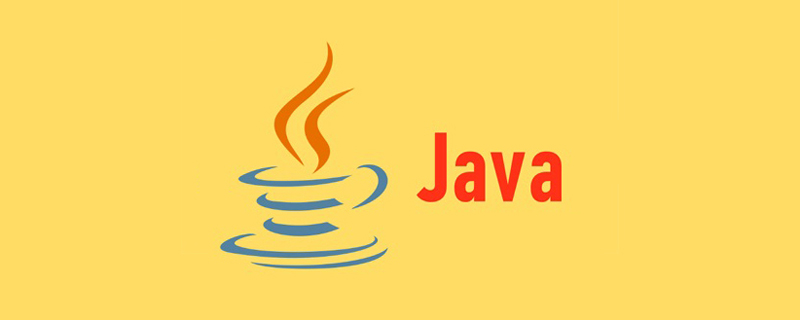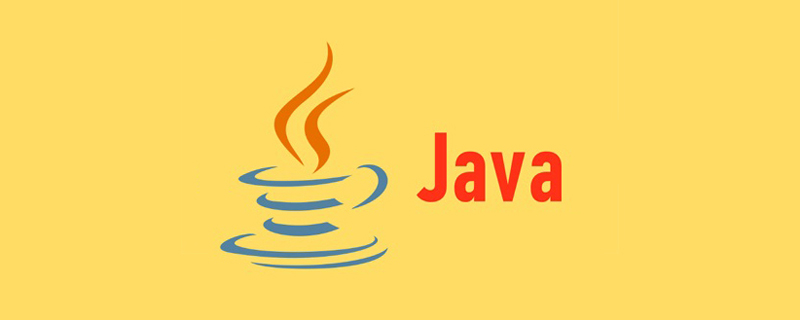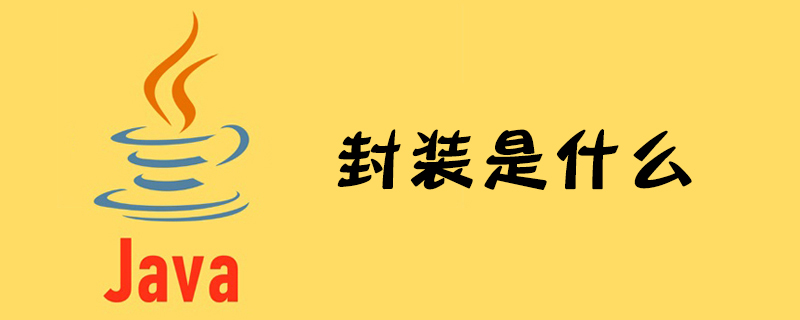
[Related learning recommendations: java basic tutorial]
Is reflection good or bad
Speaking of Java When beginners first come into contact with the various advanced features of reflection, they often express great excitement, and even forcefully use reflection to "show off their skills" in some scenes that do not require the use of reflection. Elderly people with more experience often ask three questions in their souls when they see reflection: Why use reflection? Doesn't reflection reduce performance? Is there any other way to solve this problem?
So today we will discuss in depth, how much impact does reflection have on performance? By the way, let’s explore why reflection affects performance?
Coding Experiment
Before we analyze the specific principles, we can draw conclusions by writing code and doing experiments.
Reflection may involve various types of operations, such as generating instances, getting/setting variable attributes, calling methods, etc. After simple thinking, we believe that generating instances has a greater impact on performance than other operations, so we use generating instances for experiments.
In the following code, we define a class InnerClass, and we test using new and reflection respectively to generate MAX_TIMES instances and print out the elapsed time.
public class MainActivity extends AppCompatActivity { private static final String TAG = "MainAc"; private final int MAX_TIMES = 100 * 1000; private InnerClass innerList[]; @Override
protected void onCreate(Bundle savedInstanceState) { super.onCreate(savedInstanceState);
setContentView(R.layout.activity_main);
innerList = new InnerClass[MAX_TIMES]; long startTime = SystemClock.elapsedRealtime(); for (int i=0; i < MAX_TIMES; i++) {
innerList[i] = new InnerClass();
}
Log.e(TAG, "totalTime: " + (SystemClock.elapsedRealtime() - startTime)); long startTime2 = SystemClock.elapsedRealtime(); for (int i=0; i < MAX_TIMES; i++) {
innerList[i] = newInstanceByReflection();
}
Log.e(TAG, "totalTime2: " + (SystemClock.elapsedRealtime() - startTime2));
} public InnerClass newInstanceByReflection() {
Class clazz = InnerClass.class; try { return (InnerClass) clazz.getDeclaredConstructor().newInstance();
} catch (NoSuchMethodException e) {
e.printStackTrace();
} catch (IllegalAccessException e) {
e.printStackTrace();
} catch (InstantiationException e) {
e.printStackTrace();
} catch (InvocationTargetException e) {
e.printStackTrace();
} return null;
} static class InnerClass {
}
}复制代码Output log:
2020-03-19 22:34:49.738 2151-2151/? E/MainAc: totalTime: 15 2020-03-19 22:34:50.409 2151-2151/? E/MainAc: totalTime2: 670复制代码
Using reflection to generate 100,000 instances takes 670ms, which is significantly higher than the 15ms of directly using the new keyword, so the reflection performance is low . Don't worry, this conclusion is a bit early. Let's try changing the total number of instances to be generated to 1000, and output the log:
2020-03-19 22:39:21.287 3641-3641/com.example.myapplication E/MainAc: totalTime: 2 2020-03-19 22:39:21.296 3641-3641/com.example.myapplication E/MainAc: totalTime2: 9复制代码
Use reflection to generate 1000 instances, although it takes 9ms, which is higher than 2ms of new, but the difference between 9ms and 2ms is invisible to the naked eye, and usually the reflection we write in business may not be executed more than 1,000 times. In this scenario, we can still say with confidence Is the reflective performance very low?
Obviously, no.
In addition to the time it takes to execute the code, let’s look at the impact of reflection on memory. We still aim to generate 100,000 instances, and make slight changes to the above code, retaining only the new method and the reflection method in turn, then run the program and observe the memory usage.

Use new method

Use reflection
Comparing the two pictures, we can see that there are many more Constructor and Class object instances in the second picture. These two parts occupy 2.7M of memory. Therefore, we can conclude that reflection will generate a large number of temporary objects and occupy additional memory space.
Get to the bottom of it: What is the principle of reflection
We use the code of the reflection generation instance in the previous experiment as the entry point.
First review the life cycle of classes in the virtual machine: loading, connection (verification, preparation, parsing), initialization, use, and uninstallation. During the loading process, the virtual machine converts the bytecode of the class into a runtime data structure and saves it in the method area. A java.lang.Class object representing the data structure of this class will be generated in the memory. Subsequent access to this class The data structure can be accessed through this Class object.
public InnerClass newInstanceByReflection() { // 获取虚拟机中 InnerClass 类的 Class 对象
Class clazz = InnerClass.class; try { return (InnerClass) clazz.getDeclaredConstructor().newInstance();
} catch (NoSuchMethodException e) {
e.printStackTrace();
} catch (IllegalAccessException e) {
e.printStackTrace();
} catch (InstantiationException e) {
e.printStackTrace();
} catch (InvocationTargetException e) {
e.printStackTrace();
} return null;
}复制代码In the codeclazz.getDeclaredConstructor() is used to obtain the constructor method defined in the class. Since we do not explicitly define the constructor method, the default value generated by the compiler for ourselves will be returned. No-argument constructor.
Let’s take a look at how getDeclaredConstructor returns the constructor. The following are all based on the jdk 1.8 code as the source code.
@CallerSensitivepublic Constructor<T> getDeclaredConstructor(Class<?>... parameterTypes)
throws NoSuchMethodException, SecurityException { // 权限检查
checkMemberAccess(Member.DECLARED, Reflection.getCallerClass(), true); return getConstructor0(parameterTypes, Member.DECLARED);
}复制代码getDeclaredConstructor method first checks the permissions, and then directly calls the getConstructor0 method.
private Constructor<T> getConstructor0(Class<?>[] parameterTypes, int which) throws NoSuchMethodException{ // privateGetDeclaredConstructors 方法是获取所有的构造方法数组
Constructor<T>[] constructors = privateGetDeclaredConstructors((which == Member.PUBLIC)); // 遍历所有的构造方法数组,根据传入的参数类型依次匹配,找到合适的构造方法后就会拷贝一份作为返回值
for (Constructor<T> constructor : constructors) { if (arrayContentsEq(parameterTypes,
constructor.getParameterTypes())) { // 拷贝构造方法
return getReflectionFactory().copyConstructor(constructor);
}
} // 没有找到的话,就抛出异常
throw new NoSuchMethodException(getName() + ".<init>" + argumentTypesToString(parameterTypes));
}复制代码getConstructor0 The method mainly does two things:
- Get an array composed of all construction methods
- Traverse the array of construction methods and find Matching
There is nothing to say about traversal matching. Let’s focus on the first thing, how to obtain the array of all constructors, which is this method privateGetDeclaredConstructors.
private Constructor<T>[] privateGetDeclaredConstructors(boolean publicOnly) {
checkInitted();
Constructor<T>[] res; // 获取缓存的 ReflectionData 数据
ReflectionData<T> rd = reflectionData(); // 如果缓存中有 ReflectionData,就先看看 ReflectionData 中的 publicConstructors 或 declaredConstructors是否为空
if (rd != null) {
res = publicOnly ? rd.publicConstructors : rd.declaredConstructors; if (res != null) return res;
} // 如果没有缓存,或者缓存中构造方法数组为空
// No cached value available; request value from VM
// 对接口类型的字节码特殊处理
if (isInterface()) { @SuppressWarnings("unchecked") // 如果是接口类型,那么生成一个长度为0的构造方法数组
Constructor<T>[] temporaryRes = (Constructor<T>[]) new Constructor<?>[0];
res = temporaryRes;
} else { // 如果不是接口类型,就调用 getDeclaredConstructors0 获取构造方法数组
res = getDeclaredConstructors0(publicOnly);
} // 获取到构造方法数组后,再赋值给缓存 ReflectionData 中的对应属性
if (rd != null) { if (publicOnly) {
rd.publicConstructors = res;
} else {
rd.declaredConstructors = res;
}
} return res;
}复制代码In the above code, I have commented the key code. Before explaining the entire process, we saw an unfamiliar type ReflectionData. Its corresponding data structure is:
private static class ReflectionData<T> { volatile Field[] declaredFields; volatile Field[] publicFields; volatile Method[] declaredMethods; volatile Method[] publicMethods; volatile Constructor<T>[] declaredConstructors; volatile Constructor<T>[] publicConstructors; // Intermediate results for getFields and getMethods
volatile Field[] declaredPublicFields; volatile Method[] declaredPublicMethods; volatile Class<?>[] interfaces; // Value of classRedefinedCount when we created this ReflectionData instance
final int redefinedCount;
ReflectionData(int redefinedCount) { this.redefinedCount = redefinedCount;
}
}复制代码ReflectionData This class is used to save some data obtained from the virtual machine. At the same time, we can see that all reflection properties are modified with the volatile keyword.
Get the cached ReflectionData data is obtained by calling the reflectionData() method.
// 定义在 Class 类中的反射缓存对象private volatile transient SoftReference<ReflectionData<T>> reflectionData;private ReflectionData<T> reflectionData() {
SoftReference<ReflectionData<T>> reflectionData = this.reflectionData; int classRedefinedCount = this.classRedefinedCount;
ReflectionData<T> rd; if (useCaches &&
reflectionData != null &&
(rd = reflectionData.get()) != null &&
rd.redefinedCount == classRedefinedCount) { return rd;
} // else no SoftReference or cleared SoftReference or stale ReflectionData
// -> create and replace new instance
return newReflectionData(reflectionData, classRedefinedCount);
}复制代码我们可以看到 reflectionData实际上是一个软引用,软引用会在内存不足的情况下被虚拟机回收,所以reflectionData()方法在开始的地方,先判断了是否可以使用缓存以及缓存是否失效,如果失效了,就会调用 newReflectionData方法生成一个新的 ReflectionData 实例。
接下来看看 newReflectionData 方法。
private ReflectionData<T> newReflectionData(SoftReference<ReflectionData<T>> oldReflectionData, int classRedefinedCount) { // 如果不允许使用缓存,直接返回 null
if (!useCaches) return null;
while (true) {
ReflectionData<T> rd = new ReflectionData<>(classRedefinedCount); // try to CAS it...
if (Atomic.casReflectionData(this, oldReflectionData, new SoftReference<>(rd))) { return rd;
} // else retry
oldReflectionData = this.reflectionData;
classRedefinedCount = this.classRedefinedCount; if (oldReflectionData != null &&
(rd = oldReflectionData.get()) != null &&
rd.redefinedCount == classRedefinedCount) { return rd;
}
}
}复制代码newReflectionData中使用 volatile + 死循环 + CAS 机制 保证线程安全。注意到这里的死循环每执行一次都会构造一个新的 ReflectionData 实例。
你可能会有疑问,Class 中 reflectionData属性什么时候被赋值的,其实是封装在Atomic.casReflectionData这个方法里了,他会检测当前Class对象中的reflectionData是否与oldReflectionData相等,如果相等,就会把new SoftReference(rd)赋值给 reflectionData。
到现在为止,关于 ReflectionData的背景知识都介绍完了。我们再回到 privateGetDeclaredConstructors中看看获取构造方法的流程。

privateGetDeclaredConstructors流程图
可以看到对于普通类,最终通过调用 getDeclaredConstructors0方法获取的构造方法列表。
private native Constructor<T>[] getDeclaredConstructors0(boolean publicOnly);复制代码
这个方法是 native 的,具体逻辑在 jdk 源码中。
在 native/java/lang/Class_getDeclaredConstructors0.c 文件中,
void getDeclaredConstructors0(Frame * frame){ // Frame 可以理解为调用native方法时,java层传递过来的数据的一种封装
LocalVars * vars = frame->localVars;
Object * classObj = getLocalVarsThis(vars); // 取得java方法的入参
bool publicOnly = getLocalVarsBoolean(vars, 1); uint16_t constructorsCount = 0; // 获取要查询的类的 Class 对象
Class * c = classObj->extra; // 获取这个类的所有构造方法,且数量保存在 constructorsCount 中
Method* * constructors = getClassConstructors(c, publicOnly, &constructorsCount); // 获取 java 方法调用所属的 classLoader
ClassLoader * classLoader = frame->method->classMember.attachClass->classLoader; // 拿到 Constructor 对应的 class 对象
Class * constructorClass = loadClass(classLoader, "java/lang/reflect/Constructor"); //创建一个长度为 constructorsCount 的数组保存构造方法
Object * constructorArr = newArray(arrayClass(constructorClass), constructorsCount);
pushOperandRef(frame->operandStack, constructorArr); // 后面是具体的赋值逻辑。将native中的Method对象转化为java层的Constructor对象
if (constructorsCount > 0)
{
Thread * thread = frame->thread;
Object* * constructorObjs = getObjectRefs(constructorArr);
Method * constructorInitMethod = getClassConstructor(constructorClass, _constructorConstructorDescriptor); for (uint16_t i = 0; i < constructorsCount; i++)
{
Method * constructor = constructors[i];
Object * constructorObj = newObject(constructorClass);
constructorObj->extra = constructor;
constructorObjs[i] = constructorObj;
OperandStack * ops = newOperandStack(9);
pushOperandRef(ops, constructorObj);
pushOperandRef(ops, classObj);
pushOperandRef(ops, toClassArr(classLoader, methodParameterTypes(constructor), constructor->parsedDescriptor->parameterTypesCount)); if (constructor->exceptions != NULL)
pushOperandRef(ops, toClassArr(classLoader, methodExceptionTypes(constructor), constructor->exceptions->number_of_exceptions)); else
pushOperandRef(ops, toClassArr(classLoader, methodExceptionTypes(constructor), 0));
pushOperandInt(ops, constructor->classMember.accessFlags);
pushOperandInt(ops, 0);
pushOperandRef(ops, getSignatureStr(classLoader, constructor->classMember.signature)); // signature
pushOperandRef(ops, toByteArr(classLoader, constructor->classMember.annotationData, constructor->classMember.annotationDataLen));
pushOperandRef(ops, toByteArr(classLoader, constructor->parameterAnnotationData, constructor->parameterAnnotationDataLen));
Frame * shimFrame = newShimFrame(thread, ops);
pushThreadFrame(thread, shimFrame); // init constructorObj
InvokeMethod(shimFrame, constructorInitMethod);
}
}
}复制代码从上面的逻辑,可以知道获取构造方法的核心方法是 getClassConstructors ,所在文件为 rtda/heap/class.c。
Method* * getClassConstructors(Class * self, bool publicOnly, uint16_t * constructorsCount){ // 分配大小为 sizeof(Method) 的长度为 methodsCount 的连续内存地址,即数组
Method* * constructors = calloc(self->methodsCount, sizeof(Method));
*constructorsCount = 0; // 在native 层,构造方法和普通方法都存在 methods 中,逐一遍历
for (uint16_t i = 0; i < self->methodsCount; i++)
{
Method * method = self->methods + i; // 判断是否是构造方法
if (isMethodConstructor(method))
{ // 检查权限
if (!publicOnly || isMethodPublic(method))
{ // 符合条件的构造方法依次存到数组中
constructors[*constructorsCount] = method;
(*constructorsCount)++;
}
}
} return constructors;
}复制代码可以看到getClassConstructors实际上就是对 methods 进行了一次过滤,过滤的条件为:1.是构造方法;2.权限一致。
isMethodConstructor 方法的判断逻辑也是十分简单,不是静态方法,而且方法名是<init></init>即可。
bool isMethodConstructor(Method * self){ return !isMethodStatic(self) && strcmp(self->classMember.name, "<init>") == 0;
}复制代码所以核心的逻辑变成了Class中的 methods数组何时被初始化赋值的?我们刨根问底的追踪下。
我们先找到类加载到虚拟机中的入口方法 loadNonArrayClass:
Class * loadNonArrayClass(ClassLoader * classLoader, const char * className){ int32_t classSize = 0; char * classContent = NULL;
Class * loadClass = NULL;
classSize = readClass(className, &classContent); if (classSize > 0 && classContent != NULL){#if 0
printf("class size:%d,class data:[", classSize); for (int32_t i = 0; i < classSize; i++)
{ printf("0x%02x ", classContent[i]);
} printf("]\n");#endif
} if (classSize <= 0)
{ printf("Could not found target class\n"); exit(127);
} // 解析字节码文件
loadClass = parseClassFile(classContent, classSize);
loadClass->classLoader = classLoader; // 加载
defineClass(classLoader, loadClass); // 链接
linkClass(classLoader, loadClass); //printf("[Loaded %s\n", loadClass->name);
return loadClass;
}复制代码在 parseClassFile方法中,调用了newClass方法。
Class * parseClassFile(char * classContent, int32_t classSize){
ClassFile * classFile = NULL;
classFile = parseClassData(classContent, classSize); return newClass(classFile);
}复制代码newClass方法在rtda/heap/class.c文件中。
Class * newClass(ClassFile * classFile){
Class * c = calloc(1, sizeof(Class));
c->accessFlags = classFile->accessFlags;
c->sourceFile = getClassSourceFileName(classFile);
newClassName(c, classFile);
newSuperClassName(c, classFile);
newInterfacesName(c, classFile);
newConstantPool(c, classFile);
newFields(c, classFile);
newMethods(c, classFile); return c;
}复制代码可以看到,在native层创建了一个Class对象,我们重点看newMethods(c, classFile)方法啊,这个方法定义在rtda/heap/method.c中。
Method * newMethods(struct Class * c, ClassFile * classFile){
c->methodsCount = classFile->methodsCount;
c->methods = NULL; if (c->methodsCount == 0) return NULL;
c->methods = calloc(classFile->methodsCount, sizeof(Method)); for (uint16_t i = 0; i < c->methodsCount; i++)
{
c->methods[i].classMember.attachClass = c;
copyMethodInfo(&c->methods[i], &classFile->methods[i], classFile);
copyAttributes(&c->methods[i], &classFile->methods[i], classFile);
MethodDescriptor * md = parseMethodDescriptor(c->methods[i].classMember.descriptor);
c->methods[i].parsedDescriptor = md;
calcArgSlotCount(&c->methods[i]); if (isMethodNative(&c->methods[i]))
{
injectCodeAttribute(&c->methods[i], md->returnType);
}
}
return NULL;
}复制代码上述代码可以看出,实际上就是把ClassFile中解析到的方法逐一赋值给了 Class 对象的 methods 数组。
总算梳理清楚了,反射创建对象的调用链为:
loadClass -> loadNonArrayClass -> parseClassFile -> newMethods -> Class 的 methods数组 privateGetDeclaredConstructors -> getDeclaredConstructors0 -> getClassConstructors (过滤Class 的 methods数组)复制代码
到目前为止,我们搞明白反射时如何找到对应的构造方法的。下面我们来看 newInstance 方法。
(InnerClass) clazz.getDeclaredConstructor().newInstance();复制代码
public T newInstance(Object ... initargs)
throws InstantiationException, IllegalAccessException,
IllegalArgumentException, InvocationTargetException { // 构造方法是否被重载了
if (!override) { if (!Reflection.quickCheckMemberAccess(clazz, modifiers)) {
Class<?> caller = Reflection.getCallerClass(); // 检查权限
checkAccess(caller, clazz, null, modifiers);
}
} // 枚举类型报错
if ((clazz.getModifiers() & Modifier.ENUM) != 0) throw new IllegalArgumentException("Cannot reflectively create enum objects"); // ConstructorAccessor 是缓存的,如果为空,就去创建一个
ConstructorAccessor ca = constructorAccessor; // read volatile
if (ca == null) { // 创建 ConstructorAccessor
ca = acquireConstructorAccessor();
} @SuppressWarnings("unchecked") // 使用 ConstructorAccessor 的 newInstance 构造实例
T inst = (T) ca.newInstance(initargs); return inst;
}复制代码接着看下 acquireConstructorAccessor 方法。
private ConstructorAccessor acquireConstructorAccessor() { // First check to see if one has been created yet, and take it
// if so.
ConstructorAccessor tmp = null; // 可以理解为缓存的对象
if (root != null) tmp = root.getConstructorAccessor(); if (tmp != null) {
constructorAccessor = tmp;
} else { // Otherwise fabricate one and propagate it up to the root
// 生成一个 ConstructorAccessor,并缓存起来
tmp = reflectionFactory.newConstructorAccessor(this);
setConstructorAccessor(tmp);
} return tmp;
}复制代码继续走到newConstructorAccessor方法。
public ConstructorAccessor newConstructorAccessor(Constructor<?> var1) {
checkInitted();
Class var2 = var1.getDeclaringClass(); // 如果是抽象类,报错
if (Modifier.isAbstract(var2.getModifiers())) { return new InstantiationExceptionConstructorAccessorImpl((String)null);
}
// 如果 Class 类报错
else if (var2 == Class.class) { return new InstantiationExceptionConstructorAccessorImpl("Can not instantiate java.lang.Class");
}
// 如果是 ConstructorAccessorImpl 的子类的话,返回 BootstrapConstructorAccessorImpl
else if (Reflection.isSubclassOf(var2, ConstructorAccessorImpl.class)) { return new BootstrapConstructorAccessorImpl(var1);
}
// 判断 noInflation , 后面是判断不是匿名类
else if (noInflation && !ReflectUtil.isVMAnonymousClass(var1.getDeclaringClass())) { return (new MethodAccessorGenerator()).generateConstructor(var1.getDeclaringClass(), var1.getParameterTypes(), var1.getExceptionTypes(), var1.getModifiers());
}
// 使用 NativeConstructorAccessorImpl 来生成实例
else {
NativeConstructorAccessorImpl var3 = new NativeConstructorAccessorImpl(var1);
DelegatingConstructorAccessorImpl var4 = new DelegatingConstructorAccessorImpl(var3);
var3.setParent(var4); return var4;
}
}复制代码具体逻辑,在上述代码中已经注释了。这里提一下 noInflation。
ReflectionFactory在执行所有方法前会检查下是否执行过了checkInitted方法,这个方法会把noInflation的值和inflationThreshold从虚拟机的环境变量中读取出来并赋值。
当noInflation 为 false而且不是匿名类时,就会使用MethodAccessorGenerator方式。否则就是用 NativeConstructorAccessorImpl的方式来生成。
默认noInflation 为false,所以我们先看native调用的方式。关注 NativeConstructorAccessorImpl类。
class NativeConstructorAccessorImpl extends ConstructorAccessorImpl { private final Constructor<?> c; private DelegatingConstructorAccessorImpl parent; private int numInvocations;
NativeConstructorAccessorImpl(Constructor<?> var1) { this.c = var1;
} public Object newInstance(Object[] var1) throws InstantiationException, IllegalArgumentException, InvocationTargetException { if (++this.numInvocations > ReflectionFactory.inflationThreshold() && !ReflectUtil.isVMAnonymousClass(this.c.getDeclaringClass())) {
ConstructorAccessorImpl var2 = (ConstructorAccessorImpl)(new MethodAccessorGenerator()).generateConstructor(this.c.getDeclaringClass(), this.c.getParameterTypes(), this.c.getExceptionTypes(), this.c.getModifiers()); this.parent.setDelegate(var2);
} return newInstance0(this.c, var1);
} void setParent(DelegatingConstructorAccessorImpl var1) { this.parent = var1;
} private static native Object newInstance0(Constructor<?> var0, Object[] var1) throws InstantiationException, IllegalArgumentException, InvocationTargetException;
}复制代码我们可以看到 NativeConstructorAccessorImpl 中维护了一个计数器numInvocations,在每次调用newInstance方法生成实例时,就会对计数器自增,当计数器超过ReflectionFactory.inflationThreshold()的阈值,默认为15,就会使用 ConstructorAccessorImpl替换 NativeConstructorAccessorImpl,后面就会直接调用MethodAccessorGenerator中的方法了。
我们先看看没到达阈值前,会调用native方法 newInstance0,这个方法定义在native/sun/reflect/NativeConstructorAccessorImpl.c中,具体newInstance0的流程我就不分析了,大致逻辑是操作堆栈执行方法。
然后我们再看看超过阈值后,执行的是 MethodAccessorGenerator生成构造器的方式。这种方式与newConstructorAccessor方法中noInflation 为 false的处理方式一样。所以可以解释为:java虚拟机在执行反射操作时,如果同一操作执行次数超过阈值,会从native生成实例的方式转变为java生成实例的方式。
MethodAccessorGenerator的MethodAccessorGenerator方法如下。
public ConstructorAccessor generateConstructor(Class<?> var1, Class<?>[] var2, Class<?>[] var3, int var4) { return (ConstructorAccessor)this.generate(var1, "<init>", var2, Void.TYPE, var3, var4, true, false, (Class)null);
}复制代码继续跟踪下去可以发现,反射调用构造方法实际上是动态编写字节码,并且在虚拟机中把编好的字节码加载成一个Class,这个Class实际上是 ConstructorAccessorImpl 类型的,然后调用这个动态类的newInstance方法。回看刚刚我们梳理的newConstructorAccessor代码,可以看到第三个逻辑:
// 如果是 ConstructorAccessorImpl 的子类的话,返回 BootstrapConstructorAccessorImpl else if (Reflection.isSubclassOf(var2, ConstructorAccessorImpl.class)) { return new BootstrapConstructorAccessorImpl(var1);
}
复制代码最终执行的是 BootstrapConstructorAccessorImpl的newInstance方法。
class BootstrapConstructorAccessorImpl extends ConstructorAccessorImpl { private final Constructor<?> constructor;
BootstrapConstructorAccessorImpl(Constructor<?> var1) { this.constructor = var1;
} public Object newInstance(Object[] var1) throws IllegalArgumentException, InvocationTargetException { try { return UnsafeFieldAccessorImpl.unsafe.allocateInstance(this.constructor.getDeclaringClass());
} catch (InstantiationException var3) { throw new InvocationTargetException(var3);
}
}
}复制代码最后是通过使用Unsafe类分配了一个实例。
反射带来的问题
到现在为止,我们已经把反射生成实例的所有流程都搞清楚了。回到文章开头的问题,我们现在反思下,反射性能低么?为什么?
- 反射调用过程中会产生大量的临时对象,这些对象会占用内存,可能会导致频繁 gc,从而影响性能。
- 反射调用方法时会从方法数组中遍历查找,并且会检查可见性等操作会耗时。
- 反射在达到一定次数时,会动态编写字节码并加载到内存中,这个字节码没有经过编译器优化,也不能享受JIT优化。
- 反射一般会涉及自动装箱/拆箱和类型转换,都会带来一定的资源开销。
在Android中,我们可以在某些情况下对反射进行优化。举个例子,EventBus 2.x 会在 register 方法运行时,遍历所有方法找到回调方法;而EventBus 3.x 则在编译期间,将所有回调方法的信息保存的自己定义的 SubscriberMethodInfo 中,这样可以减少对运行时的性能影响。
想了解更多相关学习,敬请关注php培训栏目!
The above is the detailed content of Talk about the speed of Java reflection. For more information, please follow other related articles on the PHP Chinese website!
 带你搞懂Java结构化数据处理开源库SPLMay 24, 2022 pm 01:34 PM
带你搞懂Java结构化数据处理开源库SPLMay 24, 2022 pm 01:34 PM本篇文章给大家带来了关于java的相关知识,其中主要介绍了关于结构化数据处理开源库SPL的相关问题,下面就一起来看一下java下理想的结构化数据处理类库,希望对大家有帮助。
 Java集合框架之PriorityQueue优先级队列Jun 09, 2022 am 11:47 AM
Java集合框架之PriorityQueue优先级队列Jun 09, 2022 am 11:47 AM本篇文章给大家带来了关于java的相关知识,其中主要介绍了关于PriorityQueue优先级队列的相关知识,Java集合框架中提供了PriorityQueue和PriorityBlockingQueue两种类型的优先级队列,PriorityQueue是线程不安全的,PriorityBlockingQueue是线程安全的,下面一起来看一下,希望对大家有帮助。
 完全掌握Java锁(图文解析)Jun 14, 2022 am 11:47 AM
完全掌握Java锁(图文解析)Jun 14, 2022 am 11:47 AM本篇文章给大家带来了关于java的相关知识,其中主要介绍了关于java锁的相关问题,包括了独占锁、悲观锁、乐观锁、共享锁等等内容,下面一起来看一下,希望对大家有帮助。
 一起聊聊Java多线程之线程安全问题Apr 21, 2022 pm 06:17 PM
一起聊聊Java多线程之线程安全问题Apr 21, 2022 pm 06:17 PM本篇文章给大家带来了关于java的相关知识,其中主要介绍了关于多线程的相关问题,包括了线程安装、线程加锁与线程不安全的原因、线程安全的标准类等等内容,希望对大家有帮助。
 Java基础归纳之枚举May 26, 2022 am 11:50 AM
Java基础归纳之枚举May 26, 2022 am 11:50 AM本篇文章给大家带来了关于java的相关知识,其中主要介绍了关于枚举的相关问题,包括了枚举的基本操作、集合类对枚举的支持等等内容,下面一起来看一下,希望对大家有帮助。
 详细解析Java的this和super关键字Apr 30, 2022 am 09:00 AM
详细解析Java的this和super关键字Apr 30, 2022 am 09:00 AM本篇文章给大家带来了关于Java的相关知识,其中主要介绍了关于关键字中this和super的相关问题,以及他们的一些区别,下面一起来看一下,希望对大家有帮助。
 java中封装是什么May 16, 2019 pm 06:08 PM
java中封装是什么May 16, 2019 pm 06:08 PM封装是一种信息隐藏技术,是指一种将抽象性函式接口的实现细节部分包装、隐藏起来的方法;封装可以被认为是一个保护屏障,防止指定类的代码和数据被外部类定义的代码随机访问。封装可以通过关键字private,protected和public实现。
 Java数据结构之AVL树详解Jun 01, 2022 am 11:39 AM
Java数据结构之AVL树详解Jun 01, 2022 am 11:39 AM本篇文章给大家带来了关于java的相关知识,其中主要介绍了关于平衡二叉树(AVL树)的相关知识,AVL树本质上是带了平衡功能的二叉查找树,下面一起来看一下,希望对大家有帮助。


Hot AI Tools

Undresser.AI Undress
AI-powered app for creating realistic nude photos

AI Clothes Remover
Online AI tool for removing clothes from photos.

Undress AI Tool
Undress images for free

Clothoff.io
AI clothes remover

AI Hentai Generator
Generate AI Hentai for free.

Hot Article

Hot Tools

SublimeText3 Linux new version
SublimeText3 Linux latest version

WebStorm Mac version
Useful JavaScript development tools

Dreamweaver CS6
Visual web development tools

SAP NetWeaver Server Adapter for Eclipse
Integrate Eclipse with SAP NetWeaver application server.

SublimeText3 Chinese version
Chinese version, very easy to use







